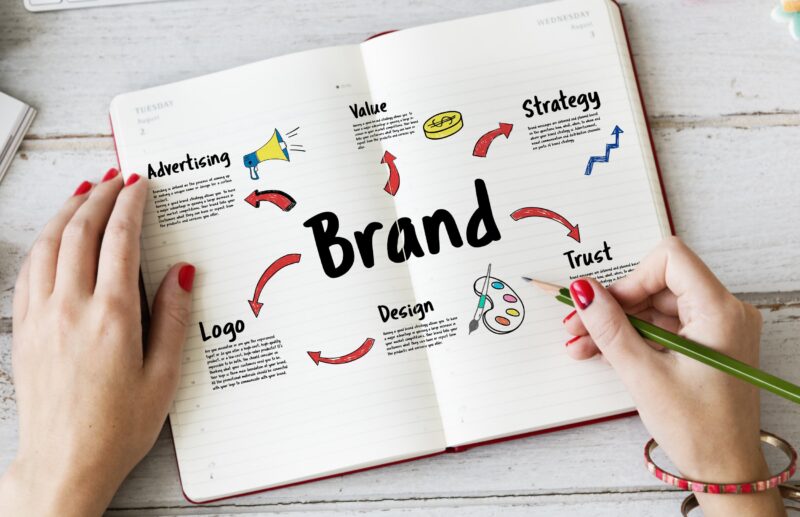
Web design is one of the most powerful tools you can use to create a memorable and consistent brand identity. Your website is often the first impression that potential customers have of your business, so you want to make sure it reflects who you are and what you offer.
Creating a strong brand identity is essential for any business that wants to stand out from the competition and connect with its target audience. If you are not a professional in this field, the best solution is to Get Professional Web Design experts that will handle things for you. Here are some essential tips that will help you build a strong name on the market with good design.
Define Your Target Audience

Before you start designing your website, you need to have a clear idea of what your brand identity is and who your target audience is. These two factors will guide your web design decisions and help you create a website that aligns with your brand goals and meets your customers’ needs.
Brand identity is the set of attributes that define your brand and make it unique. It includes your brand name, logo, slogan, mission, vision, values, personality, voice, tone, and style. It should reflect what your business stands for, what you offer, and how you want to be perceived by your customers.
Your target audience is the group of people who are most likely to be interested in your products or services, and who you want to reach with your marketing efforts. It should be defined by relevant criteria, such as demographics, psychographics, behavior, needs, pain points, and goals.
Also, it should be specific enough to help you tailor your website content and design to their preferences and expectations.
To define target audience, you can use various methods, such as:
- Market research and competitor analysis to identify your niche
- Creating a brand strategy document that outlines your brand purpose, vision, values, and goals
- Recognize your ideal customer and describes their characteristics, motivations, and challenges
- Develop a brand voice and tone guide that defines how you communicate with your audience and what tone you use in different situations
- Choose a style that specifies your brand colors, fonts, images, icons, and other visual elements
How to Choose The Right Visual Elements?

The visual elements of your website are the first things that your visitors will notice, so you want to make sure they are attractive, consistent, and relevant to your brand identity. They include colors, fonts, images, and icons, and should work together to create a cohesive and appealing web design.
To choose the right elements for a website, you can follow these tips:
- Use a color palette that matches your brand personality and your target audience’s preferences. You can use tools like Coolors or Adobe Color to generate harmonious color schemes.
- Pick fonts that are legible, versatile, and suitable for your brand voice and tone. You can use tools like Google Fonts or Font Squirrel to find and download free fonts.
- Select images that are high-quality, relevant, and engaging. You can use tools like Unsplash or Pexels to find and download free stock photos.
- Choose icons that are simple, recognizable, and consistent. You can use tools like Font Awesome or Flaticon to find and download free icons.
How to Establish Trust and Credibility?

Another important aspect of web design is to establish brand trust and credibility with your website content, tone, and layout.
Your website is not only a showcase of your products or services, but also a reflection of your brand values, reputation, and authority.
The goal is to convince the visitors that you are a reliable, professional, and trustworthy business that can solve their problems and meet their expectations.
Here are some essential tips that can help:
- Write clear, concise, and compelling content that showcases your brand benefits, features, and testimonials. You can use tools like Grammarly or Hemingway to check and improve your writing quality and readability.
- Use a consistent and appropriate tone that matches your brand voice and your target audience’s preferences. The best solution is to implement tools like Tone Analyzer or Toneapi to analyze and optimize your tone for different emotions and intents.
- Optimize the layout for user experience, usability, and accessibility. The best options for this are Figma or Sketch, which are perfect to create and test your web design prototypes and mockups.
- Add trust signals and social proof to your website, such as logos, badges, certificates, reviews, ratings, testimonials, case studies, and endorsements. You can use tools like Trustpilot or Yotpo to collect and display customer feedback and reviews.
Maintain Consistency

One of the key challenges of creating a strong brand identity is to keep it consistent across all your online and offline channels. Consistency means that your brand elements, such as your logo, colors, fonts, images, icons, voice, tone, and style, are the same or similar on your website, social media, email, print, and other platforms.
Consistency helps you to create a recognizable and memorable brand image, reinforce your brand message, and build trust and loyalty among your customers. It also helps you to avoid confusion and inconsistency, which can damage your brand reputation and credibility.
Update and Develop as Your Business is Growing

It is a dynamic filed that has to be changed all the time. You want to keep your brand identity relevant, fresh, and competitive, while still maintaining your core values and identity.
The best approach is to follow these tips:
- Monitor brand performance and feedback regularly to determine strengths, weaknesses, opportunities, and threats
- Start a brand audit from time to time to evaluate your brand and compare it with competitors and trends
- Implement changes and improvements based on brand audit results and your brand goals
- Communicate and promote changes to your customers and stakeholders to ensure they understand and support your brand evolution
Last Words
Even though there is a huge competition today in almost every filed, there are some details that can help you step out from the crowd and become more recognizable. The proper brand identity is one of the essential things that every business must build to become and remain competitive.



